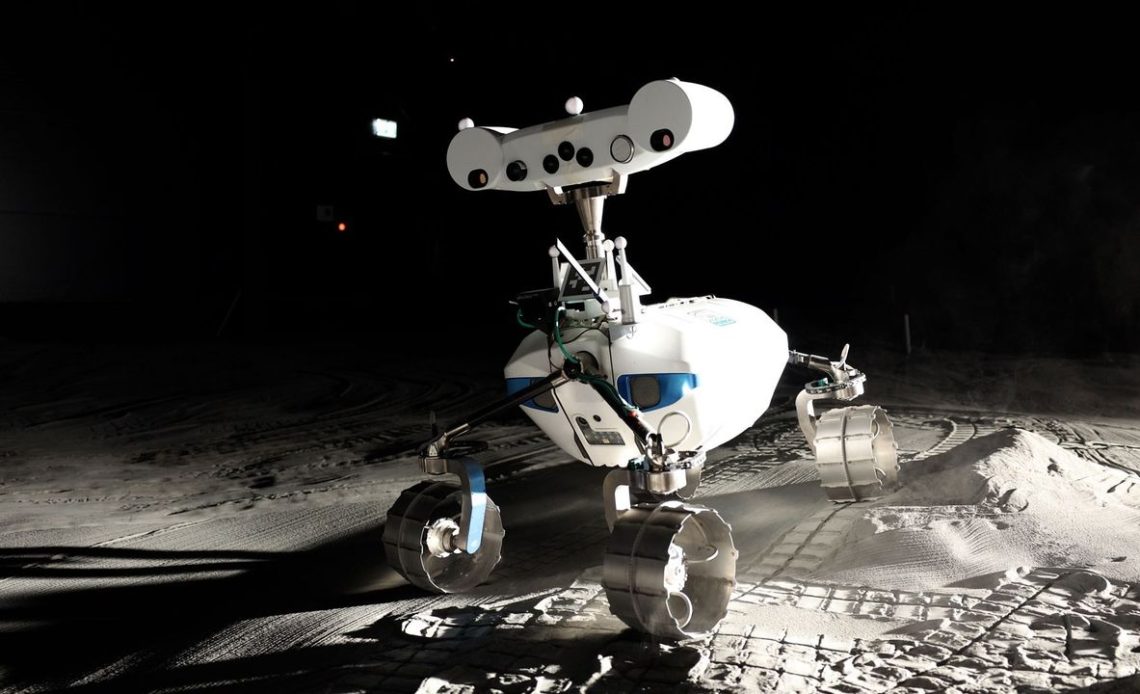
If Wall-E and a Mars rover had a baby, it would look like LRU1. With its bulbous white “head” packed with cameras and a sturdy tracked body, this German Aerospace Center (DLR) rover looks like it wandered straight out of a Pixar animation studio. But don’t let its cuteness fool you. This robot is serious about photography, as comes equipped with some of the most advanced imaging technology ever destined for lunar exploration.
LRU1’s distinctive wide head houses a multispectral stereo panoramic camera system that sees far beyond what our eyes (or conventional cameras) can perceive. While photographers on Earth obsess over capturing the perfect RGB colour balance, this rover is measuring image data across wavelength ranges that extend well into the infrared and ultraviolet spectrum.
On the Moon, this capability will allow scientists to identify and map the mineralogical composition of the lunar surface, essentially creating geological maps through photography alone.
Why water is crucial
German Aerospace Center recently put it through its paces at the LUNA facility in Cologne, carrying out a 700 square metre Moon simulation complete with realistic lunar dust. The mission: test instruments and robots designed to locate water ice on the Moon. Particularly in permanently shadowed craters near the south pole where ice may have sat frozen for billions of years.
Finding it isn’t just an act of nerdy curiosity, but a very practical one. When humans return to the Moon, water ice represents a critical resource that can be converted into drinking water and split into hydrogen and oxygen for rocket fuel. First, though, scientists need to know whether this ice exists as solid layers, is chemically bounded within rocks, or is mixed throughout the lunar dust.

From a photography point of view, LRU1’s imaging system is genuinely fascinating. The multispectral stereo panoramic camera doesn’t just take pretty pictures; it simultaneously creates detailed 3D terrain models. The latter helps the rover autonomously navigate around obstacles and find the safest routes, while the multispectral imaging reveals what the surface is actually made of.
Think of it as combining the depth-sensing technology in your smartphone with hyperspectral imaging used by Earth observation satellites, then miniaturising it for a lunar rover. The resulting dataset provides both geometric and compositional information in a single scan.
This isn’t just a prototype, either. The LRU1’s already proven itself exploring Mount Etna in Italy as part of the ARCHES mission, working alongside other robots in rough volcanic terrain that mimics lunar and Martian environments. The LUNA tests represented the final dress rehearsal, demonstrating that all systems work together as a complete mission package.

DLR has proposed this mission concept to the European Space Agency for deployment using the Argonaut lander, currently under development. If selected, LRU1 and its distinctive camera head could soon be photographing the real Moon, not a simulation.
More fundamentally, the LRU1 proves that autonomous robotic photography isn’t just about capturing stunning vistas. It’s about using advanced imaging technology to answer fundamental questions about our nearest celestial neighbour and enable future human exploration. And if you can also look cute while doing it, why the heck not?
Author: Tom May
Source: DigitalCameraWorld
Reviewed By: Editorial Team



